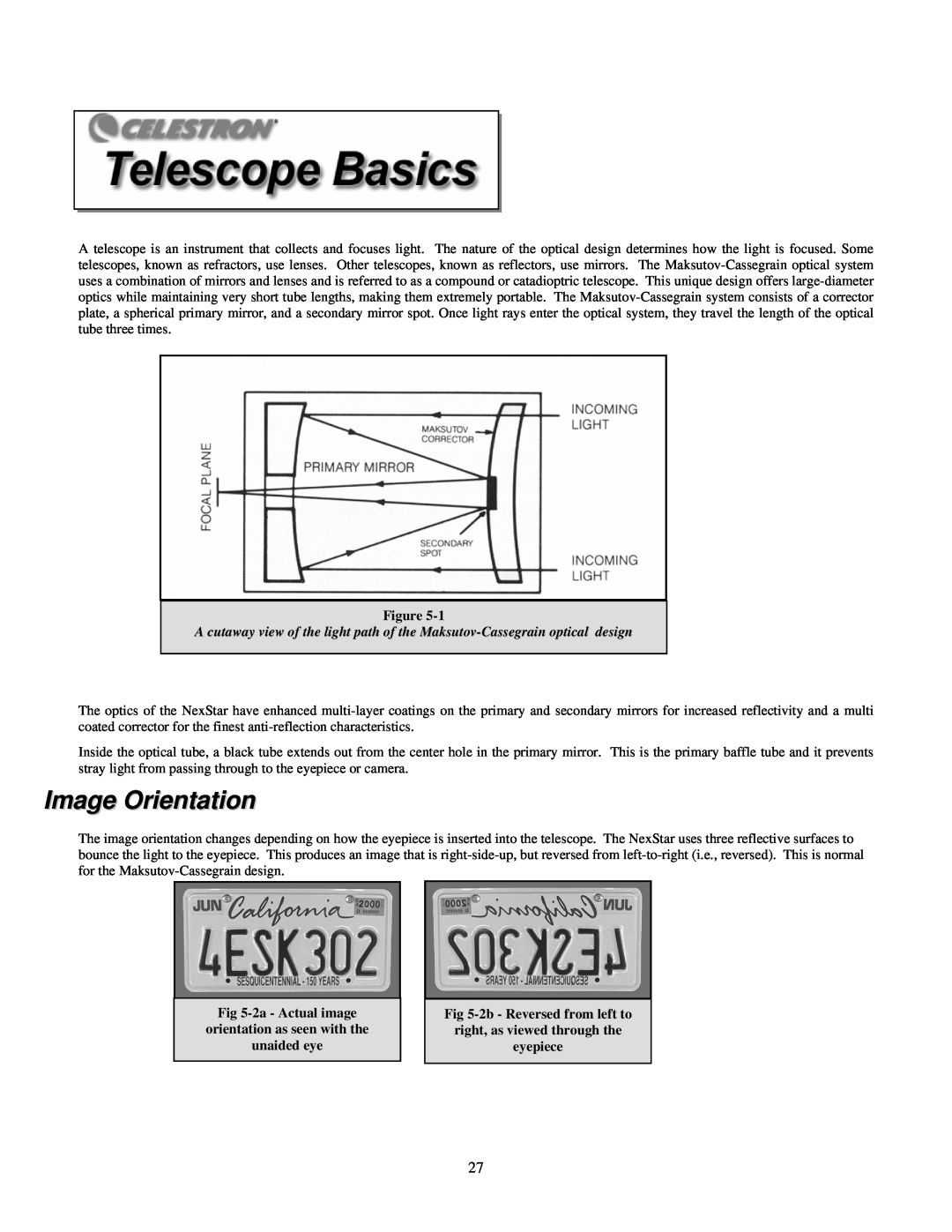
A telescope is an instrument that collects and focuses light. The nature of the optical design determines how the light is focused. Some telescopes, known as refractors, use lenses. Other telescopes, known as reflectors, use mirrors. The
Figure
A cutaway view of the light path of the
The optics of the NexStar have enhanced
Inside the optical tube, a black tube extends out from the center hole in the primary mirror. This is the primary baffle tube and it prevents stray light from passing through to the eyepiece or camera.
Image Orientation
The image orientation changes depending on how the eyepiece is inserted into the telescope. The NexStar uses three reflective surfaces to bounce the light to the eyepiece. This produces an image that is
Fig 5-2a - Actual image
orientation as seen with the
unaided eye
Fig 5-2b - Reversed from left to
right, as viewed through the
eyepiece
27
